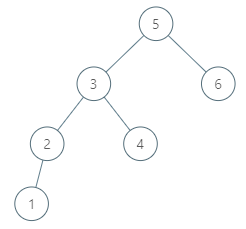510. Inorder Successor in BST II
510. Inorder Successor in BST II
Description
Given a node in a binary search tree, return the in-order successor of that node in the BST. If that node has no in-order successor, return null.
The successor of a node is the node with the smallest key greater than node.val.
You will have direct access to the node but not to the root of the tree. Each node will have a reference to its parent node. Below is the definition for Node:
1 | class Node { |
Example 1:

1 | Input: tree = [2,1,3], node = 1 |
Example 2:

1 | Input: tree = [5,3,6,2,4,null,null,1], node = 6 |
Constraints:
- The number of nodes in the tree is in the range
[1, 10^4]. -10^5 <= Node.val <= 10^5- All Nodes will have unique values.
Follow up: Could you solve it without looking up any of the node’s values?
Hints/Notes
- binary search tree
- if the node has right child, then it’s the leftmost node of the right child
- otherwise, it’s the node’s first parent that has the node in left branch
Solution
Language: C++
1 | /* |